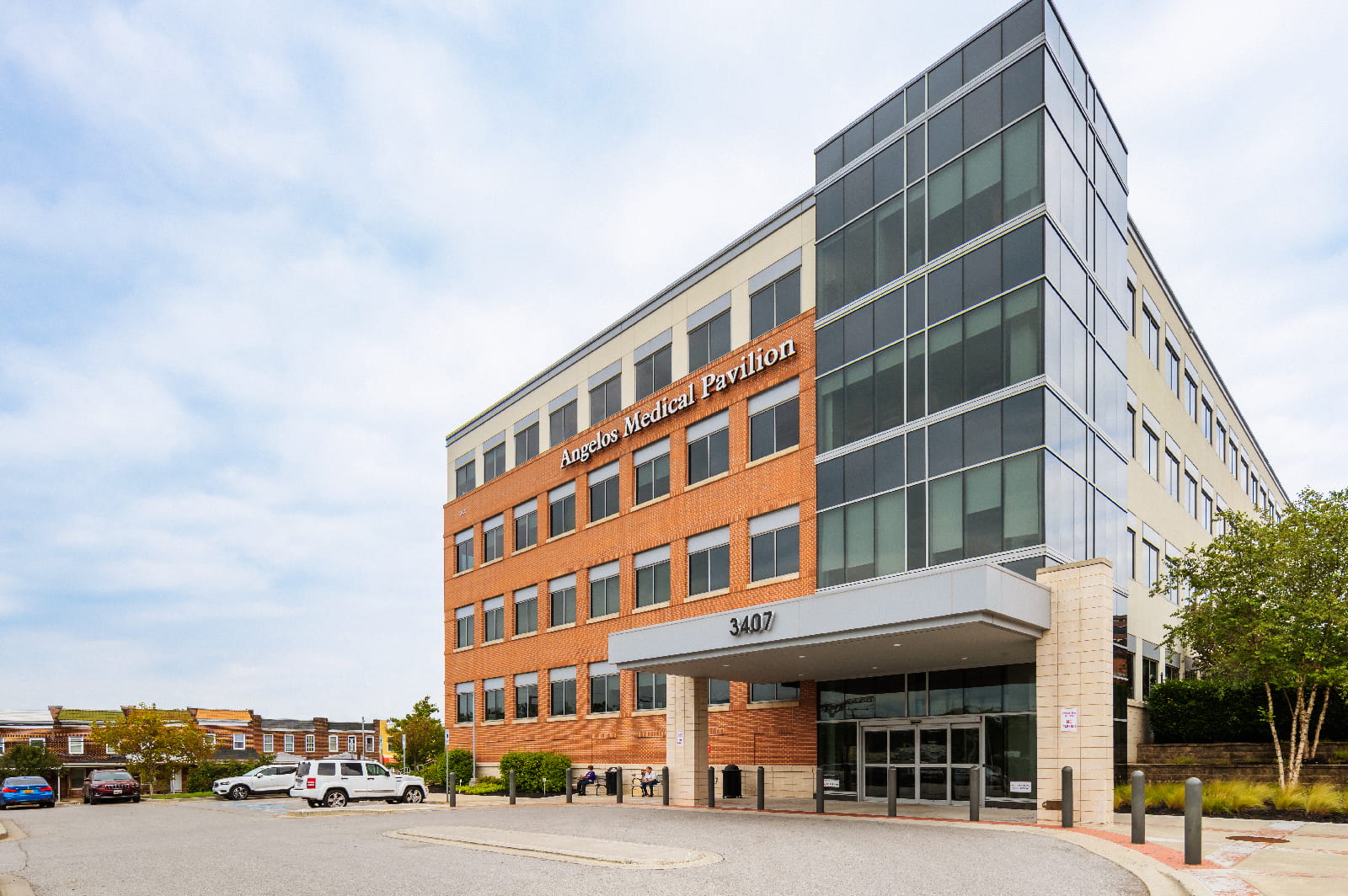
Ascension Saint Agnes Maryland Surgeons
- Surgery
Hours
Monday: 8 a.m. - 4:30 p.m.
Tuesday: 8 a.m. - 4:30 p.m.
Wednesday: 8 a.m. - 4:30 p.m.
Thursday: 8 a.m. - 4:30 p.m.
Friday: 8 a.m. - 4:30 p.m.
Appointments
Hernia Surgery
We at Saint Agnes Medical Group, Maryland Surgeons believe that the relationship between patient and surgeon is crucially important to providing top-notch and personalized hernia care.
Hernias commonly form when there is a weakness within a wall of the body that holds a tissue or organ in it. There are many types of hernias but the most common occur in the abdomen. Most hernias can be repaired with a minimally invasive (laparoscopic or robotic) procedure. To help prevent recurrence many hernias are repaired with a mesh which strengthens the weakened wall.
We work closely with our patients to ensure that the best possible treatment is provided in a caring and compassionate setting. We aim to ensure our patients clearly understand their disease and how each treatment option will affect them.
We at Maryland Surgeons are highly skilled in hernia surgery and use state of the art equipment and advanced techniques. Depending upon the patient, we can perform laparoscopic procedures or robotic-assisted surgery. These surgical techniques offer precision and improved cosmetic outcomes where small incisions are made in the abdominal wall to reduce the size of the surgical incision.
Please contact us at 443-574-8500 to set up an appointment or to get more information about how our surgeons can help.
Frequently Asked Questions - Hernia Surgery
Q. What is a hernia?
A. A hernia is a bulge through a weak area, usually in the abdominal wall. Imagine your belly as a wall. This wall keeps your insides inside of you. If there is a weakness in the wall, then your internal organs can bulge out. This bulging is the hernia. Sometimes you can see the bulge as a lump. Other times, it can cause pain. Sometimes, if intestines are involved in the hernia, you can have nausea, difficulty with bowel movements, or even vomiting.
Q. What causes hernias?
A. All hernias are caused by a weakness in a wall that allows something to bulge through the wall, usually the abdominal wall. We are born with areas of natural weakness in the abdominal wall. The most common hernias occur at the navel and are called umbilical hernias, and in the groin, which we call inguinal hernias. Weaknesses in the abdominal wall can also result from surgical incisions, and we call these incisional hernias.
Q. What are the risk factors for getting a hernia?
A. A combination of age, constipation, straining, coughing, and lifting heavy objects can cause these weaknesses to get larger, and as a result, a hernia forms.
Q. When should I get surgery for a hernia?
A. There is one situation where you simply must get your hernia repaired: If you have intense pain that does not go away, nausea, vomiting, or difficulty having a bowel movement, a piece of intestine may be trapped in the hernia. We call this an incarcerated hernia. If this occurs, you must get the hernia repaired without delay. If it is not repaired, it is possible for the entrapped intestine to lose its blood supply and begin to die.
More commonly, patients will have hernias that can be fixed electively. If you have mild, intermittent discomfort or pain that gets better with rest, and a bulge that you can push back in, then you may have the a hernia that can repaired nonurgently.
Q. What does hernia surgery involve?
A. Currently there are three basic ways to repair a hernia. First, a hernia can be repaired by an "open" approach, in other words with a single incision that is about the length of the hernia itself, anywhere from two inches to the entire length of the abdomen, depending on how large the hernia is. Second, a hernia can be repaired laparoscopically, in which multiple small, Band-Aid-sized incisions are used to repair the hernia. Finally, a hernia can be fixed robotically. Robotic surgery is one of the most recent techniques to be developed in surgery. Similar to laparoscopic surgery, multiple small incisions are used, but instead of the surgeon using the surgical instruments by hand, robotic arms are attached to the instruments, and the surgeon operates the robot from a console.
In many cases, the hernia is repaired with mesh, also called a patch. This is a usually synthetic screen that is implanted onto the abdominal wall muscle. Mesh has been proven to decrease the chance of hernias recurring after repair and is considered the standard of care for many hernias.
Q. Which surgery option is the best?
A. There is no one best option. Every patient is different, every hernia is different, and every surgeon is different. Each surgeon has spent years perfecting his or her method of giving you the best result possible. Your surgeon will take into account your medical conditions, the size and location of your hernia, and many other factors. Based on his or her personal methods, and your particular case, your surgeon will arrive at the very best option for you. In some cases, your surgeon may feel the open approach is best; in others, the laparoscopic or robotic.
Q. What is the recovery like after hernia surgery?
A. Hernia surgery is often outpatient, depending on the size of the hernia. This means that you will go home the same day of surgery. You can expect several days of pain, regardless of the method used to repair the hernia. You should expect to walk immediately after your repair, and can resume normal activities as pain permits. Most surgeons will limit the amount of weight you should lift, for example 10-20 pounds. This restriction will last anywhere from 2 weeks to 6 weeks, depending on the severity of the hernia, and how physically demanding your normal work and home activities are.